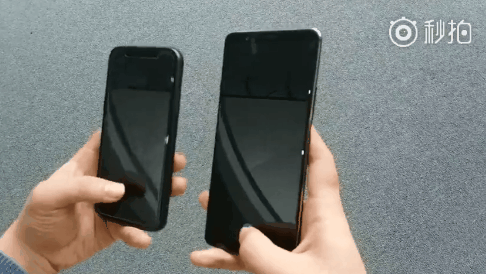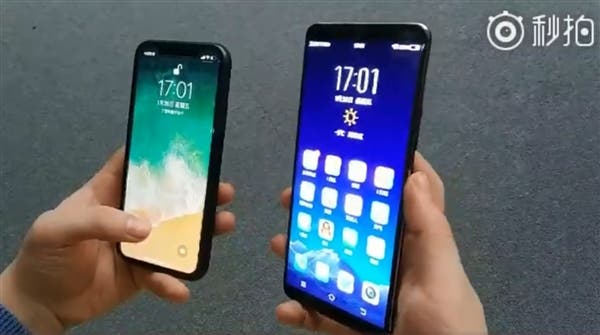When Apple launched the iPhone X, many customers wowed thinking the Cupertino-based company came in tons of innovations including the full-screen and the Face ID. But the truth this the full-screen technology has been on many Android-running smartphones for a while, and if there is something to praise Apple for is the facial recognition technology. We know it doesn’t work properly/securely in some cases, but it’s the first facial recognition technology appeared on a top brand smartphone. Immediately after that, many Android smartphones began getting this feature. But if Android wants to compete with Apple like equals, it should come in with something appropriate. Seems, it’s already done. A few days back, the world’s first under-display fingerprint smartphone was announced in face of the VIVO X20 Plus UD. So don’t you want to compare these two technologies?
In terms of appearance, the VIVO X20 Plus UD doesn’t differ much from the original model. The main difference is the canceled back-mounted fingerprint scanner and locating it under the display. To use this technology there is placed an additional RGB Pixel door adapted OLED display with a thickness of 0.68mm only. The principle of photoelectric reflection technology is the following. The screen emits light through the glass cover to reach the fingers. As the latter have different lines, the reflected lights will be different and the reflected light will form different ‘pictures’. This program has been developed by Synaptic.
The advantages of this technology found in the VIVO X20 Plus UD are obvious. Users do not have to pick the phone up to unlock it. As you know, the iPhone X’s Face ID works through the front camera. So you have to pick up to make the system work. Moreover, it can be used for making fingerprint payments. From a technical point of view, the under-display fingerprint technology should become the main trend for Android-running full-screen smartphones. So it’s quite interesting to see how it competes with the Face ID.
From a technical point of view, screen fingerprinting will be the general trend for Android full-screen mobile phones. That unlock experience, screen fingerprint unlocks and iPhone X-led face recognition who better?

Check out the video via the Source link, or take a look at the gif below that clearly shows the advantages of using the under-display technology as well as the speed of the process.






It doesn’t matter which is faster. The real article is which will be more secure. Truth be told, its good to have both anyway. And if you’re using android you can pretty much expect that to be the case.
Also keep in mind with Face ID (Apple) the face ID unlocks the phone but you still have to swipe the screen. If you’re talking about pure speed, having to face unlock and then swipe the screen is obviously slower.
It doesn’t matter which is faster. The real article is which will be more secure. Truth be told, its good to have both anyway. And if you’re using android you can pretty much expect that to be the case.
Also keep in mind with Face ID (Apple) the face ID unlocks the phone but you still have to swipe the screen. If you’re talking about pure speed, having to face unlock and then swipe the screen is obviously slower.